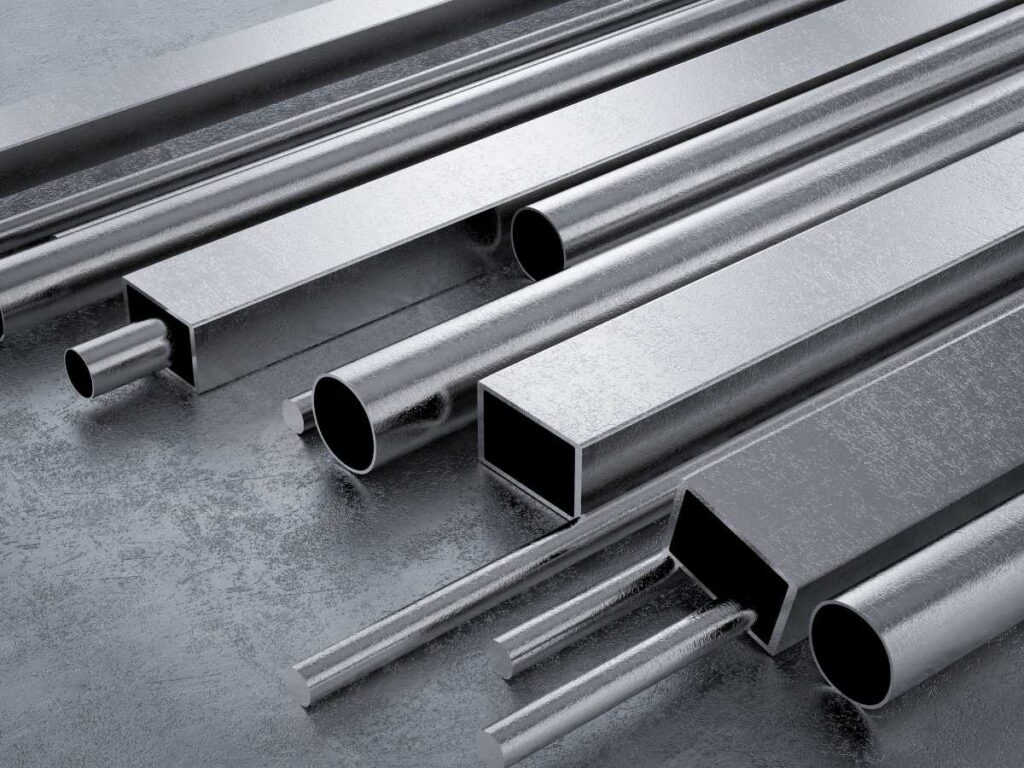Steel is a versatile and indispensable material that has played a major role in the modern world. This alloy, primarily composed of iron and carbon, is known for its flexibility and durability.
Adding elements like chromium, nickel, manganese, and molybdenum can further improve specific properties, giving rise to many types of steel alloys tailored for different applications.
Steel is the backbone of infrastructural development and technological advancements in modern industries. It caters to the different needs of various sectors, including construction, automotive, aerospace, energy, manufacturing, and medical.
Steel’s remarkable properties and adaptability make it a cornerstone of modern industries, fostering innovation and driving progress across various sectors. The continued development and exploration of steel alloys promise even more advanced and sustainable solutions in the future.
Definition of Steel Alloys and Their Growing Significance
Steel alloys, composed of iron and carbon, also contain chromium, nickel, manganese, and molybdenum. These added elements enhance specific properties, creating various alloys tailored for unique applications.
Because of this, industries facing new challenges demand advanced materials with improved performance, durability, and sustainability. Steel alloys have risen to prominence by offering versatile and adaptable solutions.
As a result, their growing significance stems from their ability to meet diverse industrial needs, fostering innovation and driving progress across various sectors.
Basics of Steel and Steel Alloys
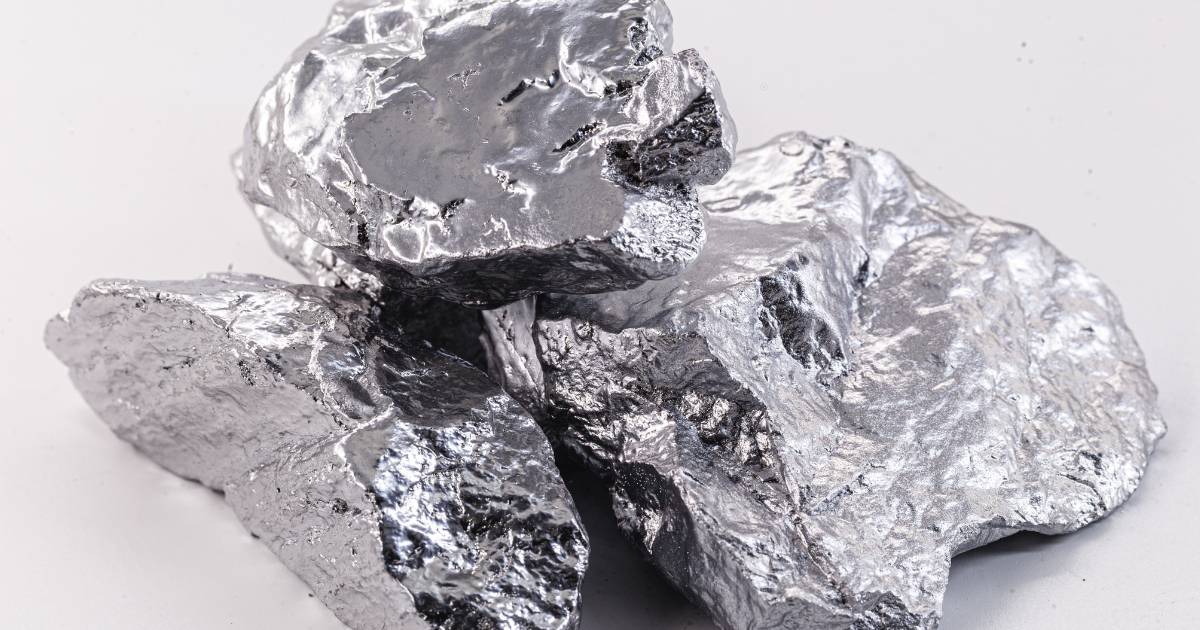
Composition of Steel: Elements and Alloys
- Iron: The primary steel component is the metallic matrix that gives foundational strength to the material. This abundant metal possesses inherent properties, such as ductility and malleability, contributing to steel’s versatility. Manufacturers create alloys with enhanced characteristics by fusing iron with other elements, mainly carbon. Iron’s magnetic properties also play a vital role in steel’s various applications, especially in the energy sector. Iron’s natural abundance and relatively low production cost make it an ideal base material for steel, ensuring its widespread use and continued importance in diverse industries.
- Carbon: Carbon is an important element in steel alloys. It enhances strength and hardness by forming carbides. Carbon content impacts the steel’s properties. Higher carbon steel is more complex and more brittle. Lower carbon steel is softer and more malleable. Carbon content also affects the steel’s ability to be welded. Excess carbon can lead to poor weldability. Carbon steel is classified according to content. Low-carbon steel has less than 0.3% carbon. Medium-carbon steel has 0.3-0.6% carbon. High-carbon steel has more than 0.6% carbon. The amount of carbon can be adjusted through the steelmaking process.
Alloying Elements
- Chromium: Chromium is a common alloying element in steel. It enhances corrosion resistance and oxidation resistance. Chromium also improves hardenability and wear resistance. The combination of chromium and steel leads to stainless steel. Stainless steel can resist corrosion and staining. The minimum amount of chromium required for stainless steel is 10.5%. Higher chromium content produces more excellent corrosion resistance. Chromium also forms carbides in steel, which improve hardness and wear resistance. Chromium is often combined with other elements to create specific steel properties.
- Nickel: Nickel is a valuable alloying element in steel. It improves strength, toughness, and corrosion resistance. Nickel also enhances high-temperature strength and flexibility. Nickel-containing steels are often used in chemical processing and aerospace applications. Nickel is added to low-alloy steels to improve toughness at low temperatures. Nickel also forms austenite in steel, which enhances flexibility and toughness. Austenitic stainless steel contains nickel and is known for its high corrosion resistance and excellent formability. Nickel, combined with other elements, creates specific steel properties. For example, adding chromium to nickel produces a high-nickel alloy with excellent corrosion resistance in acidic environments.
Other Alloy Elements
- Manganese: Manganese is a common alloying element in steel. It enhances strength and hardenability. Manganese also improves the steel’s resistance to abrasion and impacts. This manganese is often combined with other elements to create specific steel properties. For example, adding manganese to steel with nickel and chromium produces high-strength, low-alloy steel with excellent toughness. Manganese also enhances the steel’s weldability and workability. Also known as Hadfield steel, manganese contains 12-14% manganese and is extremely hard and wear-resistant.
- Molybdenum: Molybdenum is a valuable alloying element in steel. It enhances strength, hardenability, and corrosion resistance. Molybdenum also improves the steel’s ability to withstand high temperatures and maintain stability under heat stress. For example, adding molybdenum to steel with chromium produces high-strength, corrosion-resistant steel with improved toughness. It can be added to steel during the steelmaking process or through ferroalloys.
- Others: There are several other alloying elements used in steel. Copper improves corrosion resistance and enhances the steel’s conductivity. Vanadium improves strength and toughness. Titanium enhances the steel’s strength and corrosion resistance at high temperatures. Cobalt improves the steel’s magnetic properties and wear resistance. Aluminum enhances the steel’s strength and corrosion resistance. Nitrogen improves the steel’s toughness and corrosion resistance. Each element is added to steel to create specific properties.
Classification of Steel Alloys
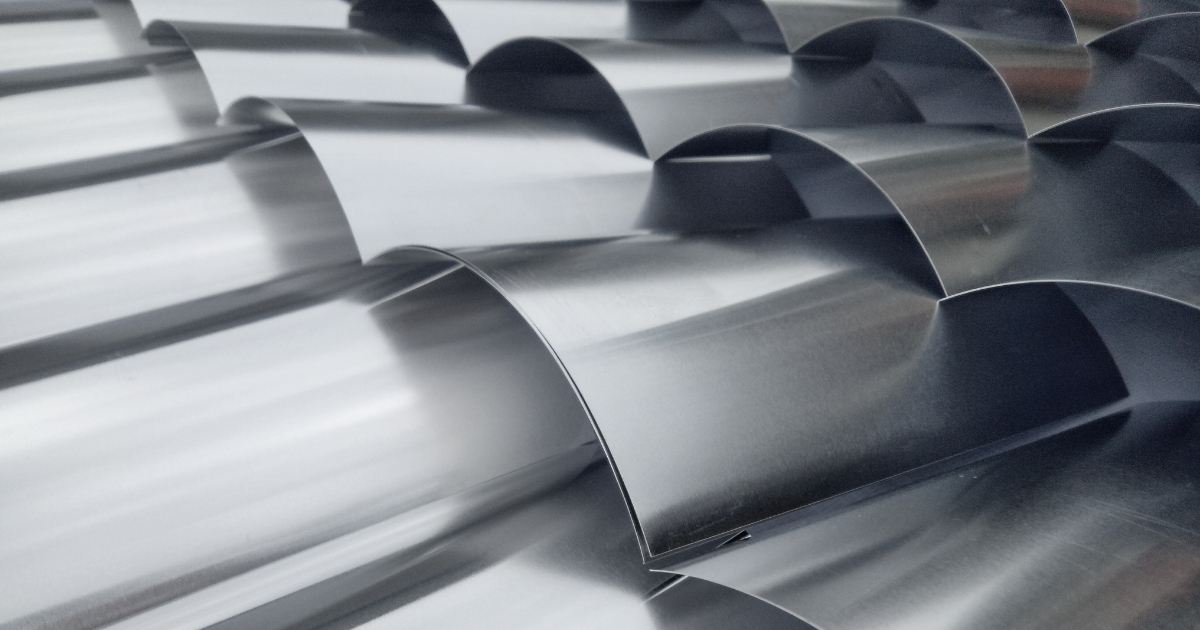
Stainless Steel
Stainless steels are a group of steel alloys that contain a minimum of 10.5% chromium. The chromium content in stainless steel forms a passive layer on the surface, which protects the steel from corrosion. It is resistant to rust and staining. Stainless steels are divided into several categories based on their microstructure: austenitic, ferritic, martensitic, and duplex. Austenitic stainless steels are the most common. It is known for its excellent corrosion resistance and formability. Ferritic stainless steels are magnetic and have good corrosion resistance. Martensitic stainless steels are solid and hard but have lower corrosion resistance.
Duplex stainless steels have a combination of properties from both austenitic and ferritic stainless steels.
Tool Steel
Tool steel is a group of steels used to make cutting, shaping, and forming tools. The high carbon content in tool steel provides excellent wear resistance and toughness. Adding other alloying elements enhances the steel’s hardness, strength, and resistance to heat and wear. Tool steels are classified based on their carbon content and the type of processing used to manufacture the steel. High-speed tool steel is a type of tool steel that has high wear resistance and retains its hardness at high temperatures. Shock-resistant tool steel is designed to withstand high-impact and load-bearing applications.
High-Strength Low-Alloy Steel
High-strength low-alloy steel is a steel alloy that contains small amounts of carbon, manganese, phosphorus, sulfur, and other alloying elements. HSLA steel has a higher strength-to-weight ratio. The alloying elements in HSLA steel provide positive characteristics. HSLA steel is commonly used in structural applications, such as bridges, buildings, offshore platforms, and the automotive, railroad, and machinery industries. The amount of each alloying element in HSLA steel can be adjusted to achieve specific properties, such as improved weldability or increased formability.
Others
Many other types of steel alloys exist, including weathering steel, nickel-chromium-molybdenum steel, silicon steel, and maraging steel. Weathering steel is a high-strength, low-alloy steel resistant to corrosion and atmospheric conditions. Nickel-chromium-molybdenum steel is a corrosion-resistant alloy used where high strength and resistance to corrosion are required. Silicon steel is an electrical steel used to manufacture transformers, generators, and motors. Maraging steel is a high-strength, low-alloy steel heat-treated to achieve exceptional toughness and strength. These steel alloys have unique properties and are used in specific applications across various industries.
Properties of Steel Alloys

Mechanical Properties
Strength
Strength is a very important mechanical property of steel alloys and is defined as the ability to resist deformation and failure under stress. The strength of a steel alloy depends on its composition, processing, and microstructure. Steel alloys can be classified into several categories based on their strength, including low, medium, and high-strength steel.
Ductility
Ductility refers to the ability of a material to deform plastically under tensile stress without fracturing. It is necessary in applications that require the material to be formed or shaped. Steel alloys with high ductility can undergo significant plastic deformation before fracture, while those with low flexibility will fail suddenly without much deformation.
Hardness
Hardness measures the material’s resistance to indentation or scratching. It is required for steel alloys used in tools and machinery. Heat treatment can harden steel alloys, such as quenching and tempering. This can be measured using various tests, including the Rockwell and Vickers hardness tests.
Toughness
Toughness is the ability to resist fracture under high stress. In steel alloys, toughness is influenced by microstructural factors such as grain size, shape, orientation, impurities, and alloying elements. This toughness can be evaluated using several methods, such as Charpy impact tests and fracture toughness tests. High toughness is desirable for applications where the material will be subjected to dynamic or impact loading, such as structural components or machinery parts.
Physical Properties
Density
Density is a physical property of steel alloys that determines their weight per unit volume. Steel alloys have a wide range of densities depending on their composition and processing. Density can evaluate the material’s weight and suitability for specific applications, such as constructing structures or vehicles.
Thermal Conductivity
Thermal conductivity refers to a material’s ability to transfer heat. Steel alloys have a moderate thermal conductivity that can vary depending on the composition and microstructure of the alloy. The addition of alloying elements and impurities such as carbon, nitrogen, and sulfur affects the thermal conductivity of steel alloys. Generally, the more alloying elements added to the steel, the lower its thermal conductivity. The microstructure of the steel, particularly the presence of grain boundaries and defects, can also impact thermal conductivity.
Electrical Conductivity
Electrical conductivity measures a material’s ability to conduct an electric current. Steel alloys have moderate electrical conductivity due to their high electrical resistance. The electrical conductivity of steel alloys varies depending on the alloying elements and their concentrations. For example, stainless steel alloys have lower electrical conductivity than carbon steel alloys due to the presence of chromium and other factors that reduce the flow of electrons.
Chemical Properties
Corrosion Resistance
Corrosion resistance is a critical property of steel alloys in many applications. Stainless steels, for example, are known for their exceptional corrosion resistance. Other alloying elements can also enhance the corrosion resistance of steel. Environmental factors like pH, temperature, and salt exposure can also affect steel alloys’ corrosion resistance. Proper selection and maintenance of the alloy can ensure long-term corrosion resistance.
Chemical Reactivity
Chemical reactivity refers to the tendency of steel to react with substances in its environment. Some steel alloys are highly reactive, while others are less so. The reactivity of steel depends on its composition and the conditions it is exposed to, such as temperature and moisture.
Steel can react with oxygen, water, acids, and bases, among other substances, which can cause corrosion or chemical breakdown of the material. Steel’s chemical reactivity can be controlled by using protective coatings or alloys with increased corrosion resistance. Understanding the chemical reactivity of steel is necessary for selecting the appropriate alloy for a given application and ensuring the material’s longevity.
Factors Influencing Steel Alloy Properties
Chemical Composition
Chemical composition contributes to the properties of a steel alloy. The alloy’s physical, mechanical, and chemical properties can be controlled by varying the percentage of elements such as carbon, manganese, silicon, and others. For example, increasing carbon content can increase the hardness and strength of the alloy but reduce its elasticity.
At the same time, increasing the amount of nickel and chromium can enhance the alloy’s corrosion resistance but also increase its cost. Other elements, such as sulfur and phosphorus, can harm the alloy’s properties and are typically kept to a minimum.
Heat Treatment
Annealing
Annealing is a process used to soften steel alloys and increase their flexibility. The process involves heating the alloy to a specific temperature, holding it there for a set amount, and then slowly cooling it. It removes internal stresses and improves the homogeneity of the alloy’s microstructure. The heating and cooling rates are all critical factors that determine the success of the annealing process. Steel alloys that have undergone annealing are more accessible to machines and can be further processed through forging, rolling, or extrusion.
Normalizing
Normalizing is a heat treatment process used to improve the mechanical properties of steel alloys. During normalizing, steel is heated above its upper critical temperature, held there for some time, and then cooled in still air. This process refines steel and improves its strength and toughness. Normalizing can also reduce the internal stresses in the steel, improving its machinability and dimensional stability. This heat treatment process is often used on carbon and low-alloy steels to achieve a uniform and fine-grained microstructure. Normalizing can be performed on both annealed and normalized steel alloys.
Other Heat Treatment
Quenching
Quenching is a process in which steel is heated above its critical temperature and then rapidly cooled by immersion in a quenching medium, such as water or oil. This process hardens the steel by causing a martensitic transformation, which produces a harsh but brittle structure. Quenching can greatly increase steel alloys’ strength and hardness and their brittleness. So, it is often followed by a tempering process to reduce the brittleness and improve the toughness of the steel. The choice of quenching medium, cooling rate, and tempering temperature can all have a significant impact on the properties of the final steel alloy product.
Tempering
Tempering involves heating the steel alloy to a specific temperature and cooling it rapidly. The process improves the toughness of the alloy by reducing its hardness and increasing its elasticity. The strength of the alloy is also enhanced. The tempering process is often combined with other heat treatments, such as quenching, to achieve desired properties. The temperature and duration of the tempering process can be adjusted to achieve specific properties, making it a versatile heat treatment technique for improving the properties of steel alloys.
Microstructure
Ferrite
Ferrite is a type of iron-carbon steel phase with a body-centered cubic structure. It is relatively pliable, making it useful for some applications. Various factors such as chemical composition, cooling rate during solidification, and heat treatment affect its presence in steel. The amount of ferrite in steel affects its mechanical properties, including strength, flexibility, and toughness. Higher amounts of ferrite result in lower power and flexibility, while lower amounts lead to higher strength and lower elasticity.
Austenite
Austenite is a high-temperature phase of steel that is non-magnetic and has a face-centered cubic crystal structure. It is formed when steel is heated above its upper critical temperature and then cooled slowly. The amount of austenite in steel depends on its chemical composition and heat treatment. Austenite provides steel with high flexibility, toughness, and the ability to be easily formed and machined. It is also known to enhance corrosion resistance.
Martensite
Martensite is a complex and brittle microstructure that forms when steel is rapidly cooled from high temperatures. This transformation occurs due to the rearrangement of the atoms in the steel structure, resulting in a highly distorted crystal lattice. The hardness of martensite is due to its high carbon content, which makes it difficult for dislocations to move within the crystal structure. Martensite can produce tough and wear-resistant steel alloys, such as tool steels.
Other Microstructure
Cementite
Cementite is a complex and brittle iron carbide that forms when heated steel. It is a component of the microstructure of steel. When viewed under a microscope, it has a distinct crystal structure and appears tiny, needle-like. The amount of cementite in steel can significantly affect its properties, such as strength and hardness. When there is too much cementite in steel, it becomes too brittle; when there is too little, it becomes too soft. Therefore, the proper amount of cementite is essential to ensure the steel’s desired mechanical properties.
Pearlite
Pearlite is a microstructure composed of alternating layers of ferrite and cementite. It forms when steel is slowly cooled from a high temperature, allowing carbon to diffuse and form cementite particles. The thickness of the ferrite and cementite layers determines the properties of pearlite, such as its strength and hardness. Pearlite is an expected microstructure in many steel sheets responsible for strength and flexibility. Its formation can be influenced by the chemical composition of the steel, as well as the cooling rate during heat treatment. By controlling the formation of pearlite, engineers can tailor the properties of steels to suit specific applications.
Processing Techniques
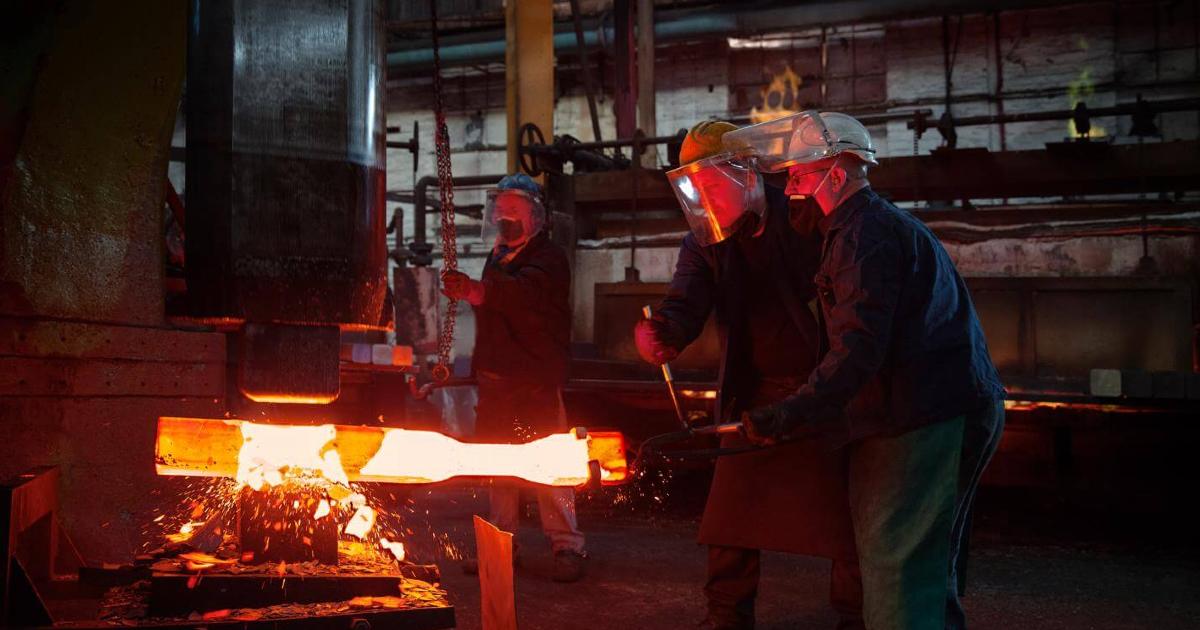
Hot Rolling
Hot rolling is a metalworking process that involves heating the steel above its recrystallization temperature and then compressing it between rollers. This process improves the flexibility and strength of the steel by reducing its grain size and improving its overall quality. The steel is also shaped and formed into the desired shape during this process. Hot rolling is commonly used for producing sheet metal, railroad tracks, and other structural components. This technique is often preferred over cold rolling for larger production volumes due to its higher efficiency and reduced cost. The resulting product has a smoother surface finish and a more uniform grain structure than cold-rolled steel.
Cold Rolling
Cold rolling is a metal-forming process that compresses steel thickness between rollers at room temperature. It increases the hardness and strength of the steel. Cold rolling is a popular method for producing high-quality sheet metal and is often used in making automotive and aircraft components. Compared to hot rolling, which is done at higher temperatures, cold rolling has a lower risk of oxidation and scale formation on the steel surface. However, it requires higher force and energy, making it a more expensive process.
Forging
Forging is a process in which a steel alloy is shaped by compressive force. The metal is heated to a high temperature and then struck with a hammer to shape it. This process changes the microstructure of the metal, making it stronger and more durable. Different types of forging techniques exist, such as open-die forging, closed-die forging, and seamless rolled ring forging. Forging is used to manufacture parts for machinery, aerospace, automotive, and other industries that require strong and durable components.
Applications of Steel Alloys in Various Industries

Construction
Steel alloys are widely used in construction due to their high strength and durability. They are used for buildings, bridges, and other infrastructure projects. They can withstand high loads and stresses, making them ideal for structural applications. It is also resistant to fire and corrosion, making them a popular choice for buildings in coastal or humid areas. Steel alloys are recyclable, making them an environmentally friendly option for construction. Overall, steel alloys are a versatile and reliable material for construction, and their properties make them an essential component of modern infrastructure.
Automotive
Steel alloys are widely used in the automotive world due to their high strength and durability. These produce car frames, engine components, suspension systems, and body parts. They offer excellent resistance to corrosion, which is a critical factor in automotive applications, where exposure to moisture and road salt can cause rusting. They are also cost-effective and be formed into different shapes and sizes. In recent years, the trend towards lightweight vehicles has led to the development of high-strength steel alloys, which offer the same strength as traditional steel alloys while reducing weight and improving fuel efficiency.
Aerospace
Steel alloys have extensive applications in the aerospace industry due to their high strength, toughness, and resistance to corrosion and heat. They are used in constructing aircraft frames, engine parts, landing gears, and other critical components. Alloys such as stainless steel and titanium are popular for aerospace applications as they are lightweight yet durable and can withstand high temperatures and pressures. Also, steel alloys can be processed to specific properties, making them suitable for different aerospace applications.
Energy
Steel alloys are widely used in the energy. Steel alloys are used in drilling equipment, pipelines, and offshore platforms in the oil and gas industry.
They are also used in power generation, including nuclear power plants for reactor vessels and steam generators. Additionally, steel alloys are used in wind turbines, solar panels, and other renewable energy technologies. Steel alloys used in the energy industry must meet high safety and performance standards and comply with regulations and environmental requirements. Ongoing research and development are focused on improving the efficiency and sustainability of steel alloys in energy applications.
Manufacturing
Manufacturing industries rely heavily on steel alloys for their machinery, tools, and equipment. Steel’s strength, durability, and malleability make it an ideal material for manufacturing. For example, steel alloys create various industries’ cutting tools, industrial machinery, and metal components. In addition, steel alloys are used to construct extensive manufacturing facilities, such as factories and production plants. Steel’s strength and durability are essential for providing structural support and protection against heavy machinery and equipment. Using steel alloys in manufacturing can improve the efficiency and longevity of machinery, helping businesses reduce maintenance costs and increase productivity.
Medical
Steel alloys are also used in medical equipment for their excellent strength, durability, and biocompatibility. Stainless steel is commonly used for surgical instruments, dental tools, and implants due to its resistance to corrosion and sterilization ability. Some high-strength steel alloys, such as bone plates, screws, and rods, are also used in orthopedic implants. Using steel alloys in medical equipment has helped improve patient outcomes by providing reliable and long-lasting equipment that can withstand the harsh conditions of medical procedures.
Recent Advances in Steel Alloy Development
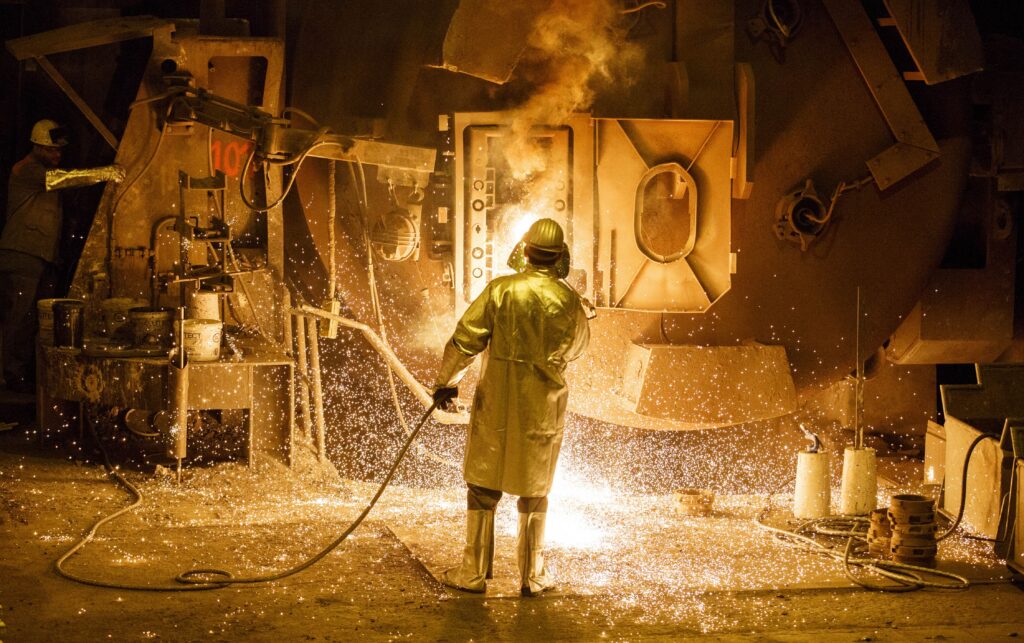
New Alloy Compositions
New alloy compositions have been developed with improved strength, flexibility, and corrosion resistance. These alloys often incorporate nickel, molybdenum, and chromium and may also have micro-alloying elements like titanium and vanadium.
Advances in computational modeling and high-throughput experimentation have facilitated the discovery and optimization of these new alloys. Research is ongoing to enhance different steel alloys’ properties, such as developing alloys with higher strength-to-weight ratios or better resistance to extreme temperatures. Additive manufacturing techniques, such as 3D printing, have allowed the production of complex geometries and customized alloys with unique properties for specific applications.
Advanced Manufacturing Techniques
Advanced manufacturing techniques have led to the development of new steel alloy products. Innovative methods such as powder metallurgy and additive manufacturing have enabled the production of alloys with improved properties such as higher strength and better corrosion resistance.
These advanced techniques also provide the ability to fabricate complex geometries and parts with reduced waste, leading to more efficient production processes. Advancements in modeling and simulation have allowed for a more accurate prediction of alloy performance, enabling designers to optimize the alloy composition for specific applications. As these technologies continue to improve, the potential for developing new and innovative steel alloys for various industries is promising.
Sustainable and Eco-Friendly Steel Production
Sustainable and eco-friendly steel production has gained attention, and efforts are being made to develop green manufacturing techniques. The use of renewable energy sources. The development of new alloys that are easy to recycle. It requires less energy to produce and is also being explored. These advancements in sustainable steel production are critical for reducing the environmental impact of steel manufacturing and meeting the demands of environmentally conscious consumers.
Recycling and Reusing Steel Alloys
Recycling and reusing steel alloys have become essential in reducing the environmental impact of the steel industry. Researchers are developing more efficient methods for recycling steel, such as using electric arc furnaces that require less energy and emit less carbon dioxide.
Innovative processes are being explored, such as magnetic separation, to recover valuable metals from steel waste. Developing high-quality recycled steel products is being pursued to improve their performance and durability, enabling them to be used in various applications. The increasing focus on sustainability and the circular economy is driving the development of new and innovative approaches to recycling and reusing steel alloys.
All about Steel Alloys
Steel alloys are versatile and widely used due to their high strength, durability, and desirable properties. The composition and processing techniques of steel alloys can significantly affect their properties. Steel alloys find applications in various industries, such as construction, automotive, aerospace, and energy. Recent advances in steel alloy development have led to new alloy compositions, advanced manufacturing techniques, and sustainable and eco-friendly steel production. Recycling and reusing steel alloys are also gaining importance. Understanding the properties and characteristics of steel alloys can help select the suitable material for a specific application.
Importance of Understanding Steel Alloy Properties for Suppliers
Suppliers must understand steel alloy properties to meet customer requirements and provide high-quality materials. Knowledge of steel alloys’ properties can help suppliers choose the suitable alloy for a particular application, reduce waste, and improve manufacturing efficiency. Understanding how processing techniques and alloy composition affect the properties of steel can help suppliers create innovative products that meet customer needs. Suppliers can ensure they offer their customers the most competitive and eco-friendly products by staying up to date with advances in steel alloy development and manufacturing. Ultimately, knowledge of steel alloy properties is critical for suppliers to remain competitive.
Future Outlook for Steel Alloys in Various Industries
Steel alloys are expected to continue to be of great importance for various industries, including construction, automotive, aerospace, energy, and medical. Future developments in steel alloys will focus on new compositions, advanced manufacturing techniques, and sustainable production and recycling. Understanding the properties of steel alloys is crucial for suppliers to meet the needs of various industries. Using new technology will allow for more precise and efficient production of steel alloys. The future of steel alloys is bright, with increasing demand and ongoing innovations to improve their properties and applications.
Our Locations
Get a Quote Now
